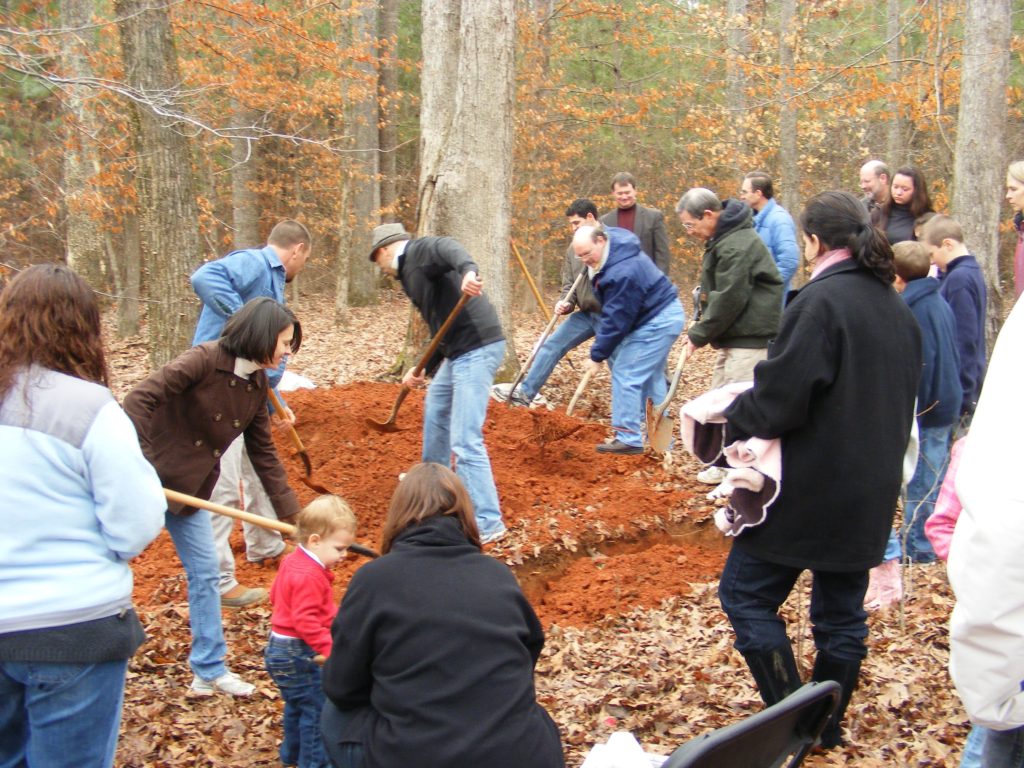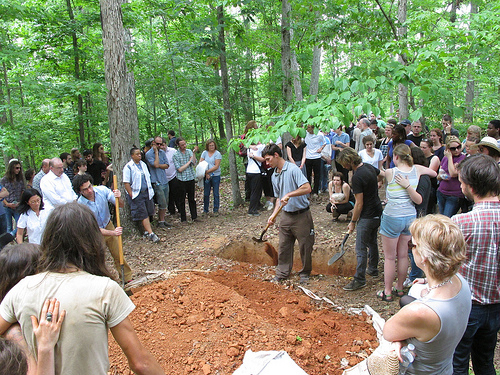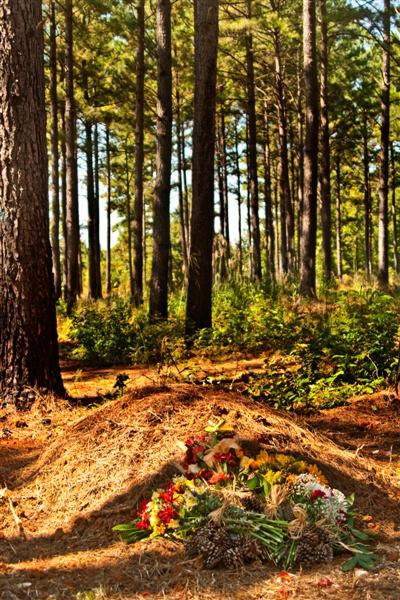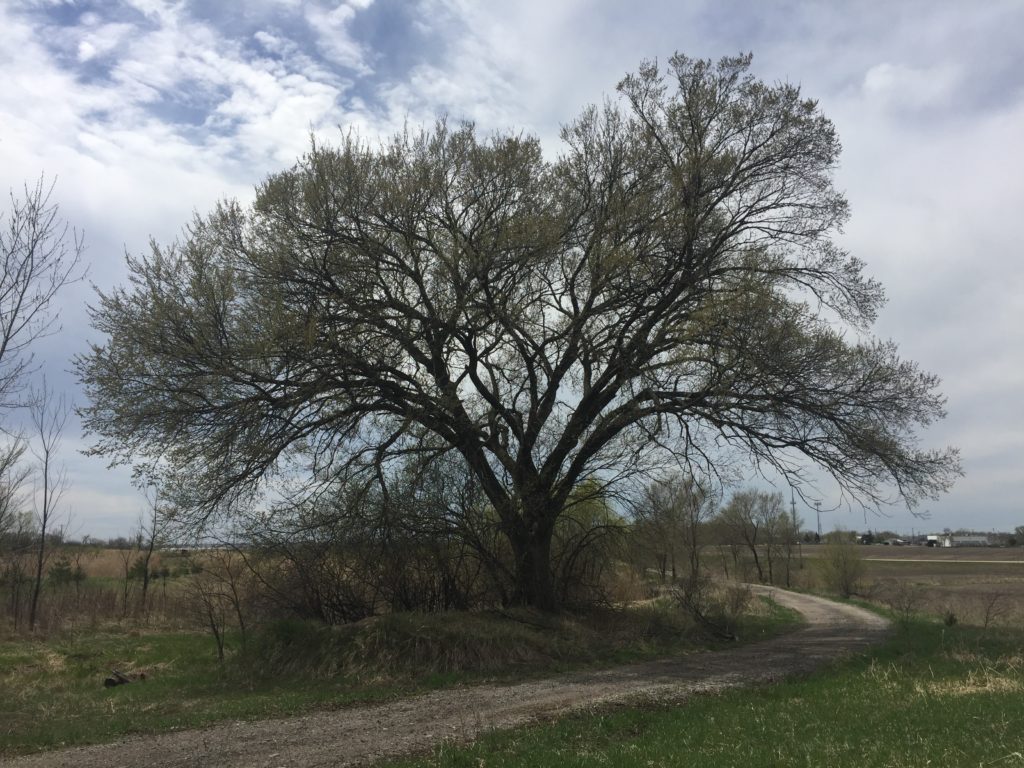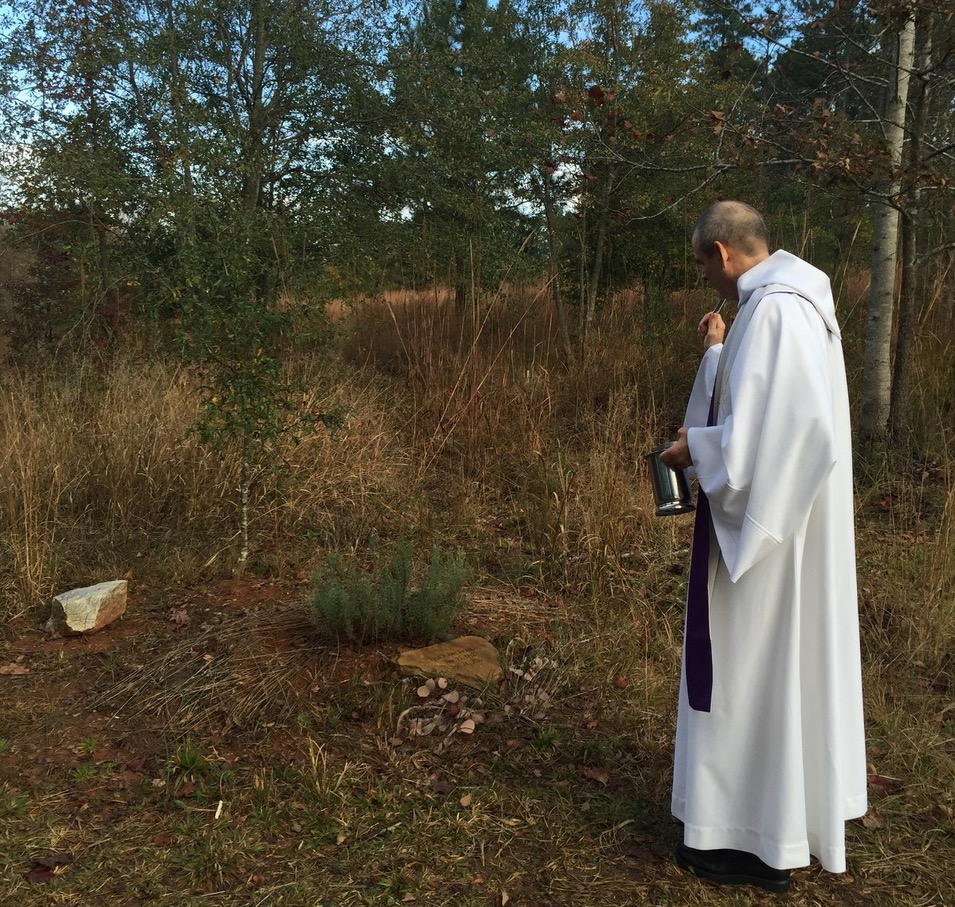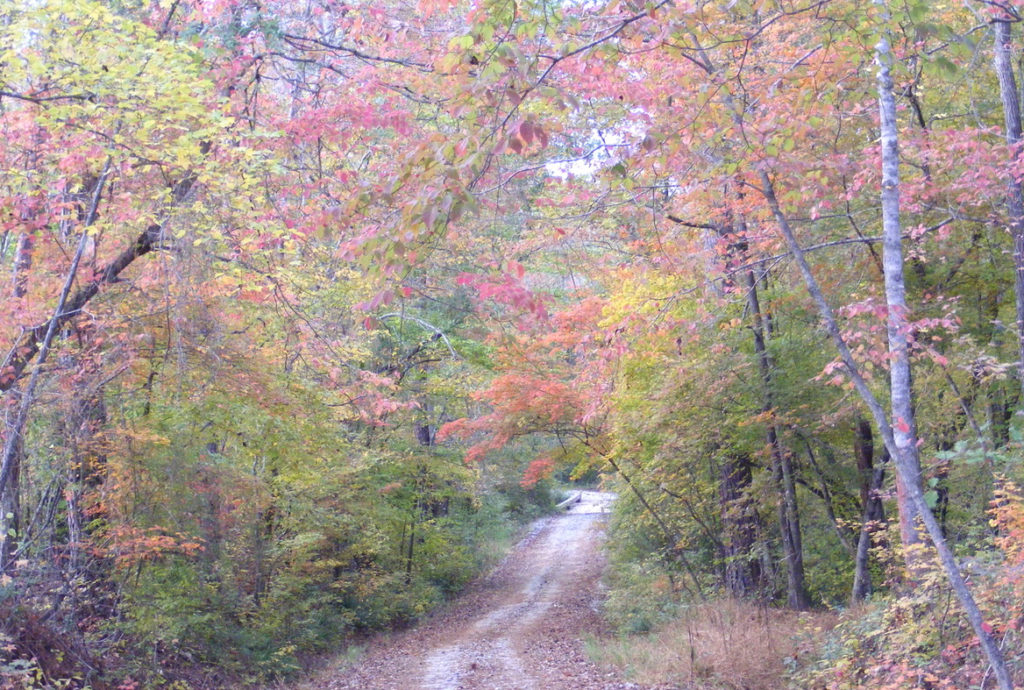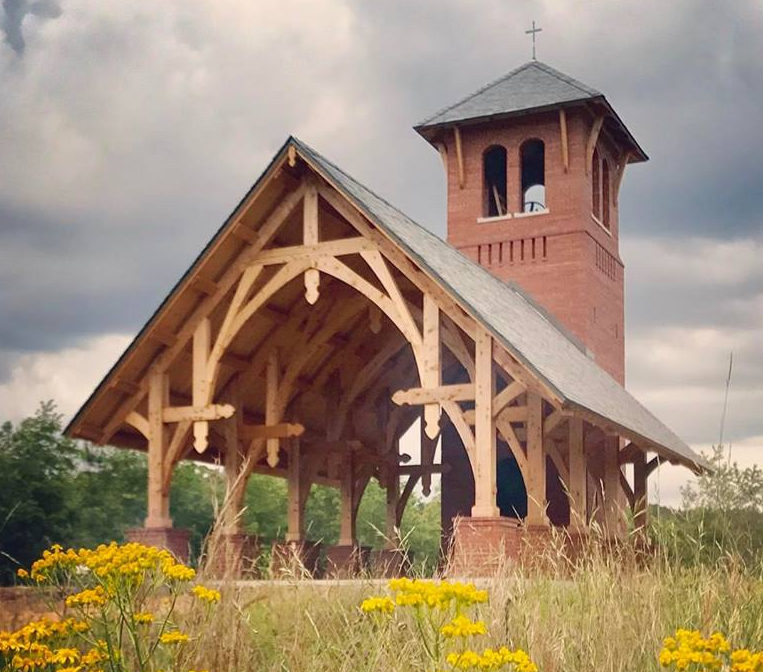In two previous posts (here and here), we have been sharing the story of Joe Whittaker. He played a pivotal role in the founding of the Honey Creek Woodlands green cemetery on the grounds of the Monastery of the Holy Spirit in Conyers, Georgia. It was, I’m convinced, his life calling.
As I wrote earlier, two elements of Joe’s story compel me to share it. First, for Creation to be healed and renewed in any significant way, we need to integrate a commitment to God’s earth into our culture. The burial of our loved ones offers a great opportunity to do just that. Burial intimately connects us with Creation. It also brings us back to the humility and radical Creation kinship of dust to dust.
Second, when God calls you to make a difference for the future of God’s earth, you will need to step outside of your comfort zone. You and I can learn about the challenges and rewards of answering that calling from Joe.
In this last segement, you’ll learn more about the burial services at Honey Creek Woodlands, what Joe will remember from his time there, the wildlife this green cemetery supports, and what Joe is doing now.
Burials at Honey Creek
“We pride ourselves on the fact that every service is a little different,” says Joe. “The modern American funeral can start to have a little bit of a cookie cutter kind of a feel to it.”
“The pine box burial is probably the most common in terms of what people are going to be buried in,” says Joe. “Those are a nice canvas for people to express their feelings and their loss and their love. We see a lot of painting on caskets and writing and decorating of caskets. That’s something that you wouldn’t see at most modern cemeteries.”
“The family is usually heavily involved. We’ve had families help dig the grave. We’ve had families help fill in the graves. I’d say the vast majority of the time it’s actually the family that is lowering the body.”
“I told my clients, “You can sit there and watch us do everything just like any other funeral. But we just want you to know that you are welcome to do as much as you’d like.””
“Often it’s basically a family burial. They take care of everything themselves, which in a bygone era used to be the norm. It can be a little dicey sometimes, because they don’t have a whole lot of experience doing this. But typically it’s very moving, very touching.”
Meaning and Stories
When I asked Joe, what he has going to hold onto from his time at Honey Creek Woodlands, he said it would it would be the people he’s met and the strength he’s seen in them.
“I wish every person I’ve buried would have lived a nice long life and just kind of faded out at the age of 95 or something, but that’s not the case,” says Joe. “You bury men who die at 40 and leave behind children. You bury children. You bury teenagers from car accidents. You bury suicides. You bury drug overdoses. You’re dealing with moms and dads.
“It’s hard to watch what they go through, but it’s just awesome to see the strength that people have.”
“I remember early on there was a very young man that came to see me in June of 2008, the first year we were open. He was a musician in Atlanta, and he had lung cancer. His friends brought him. They were all in their twenties, and one of the friends pulled me aside pretty early on. She said, “Look, he doesn’t have any family and doesn’t have any life insurance or any money, but don’t worry – we’re well connected with the musicians in the Atlanta area. We’re going to have a fundraising concert, and we’re going to get the money.””
“So I met with the young man. He was in pretty rough shape as he was in hospice at the time. We put him in a golf cart to take him out there. We picked him a spot. I don’t think a week went by before I got a phone call that he had passed. The person who called me was the same person who had assured me about the money. She said, “Well, we haven’t done our benefit concert yet. We thought he had more time.””
She promised, however, that even if it took until after the burial to do the benefit that they would get Honey Creek Woodlands the money. Joe trusted her. The burial went ahead.
“So they put the word out on social media that this guy had died. Money poured in from musicians from all across the country. A lot of money came out of Chicago, all the big cities. And this wasn’t like a well-known musician. He was just with a garage band.”
“By the time we buried the guy, his friends didn’t just have the money to bury him, they also made a very substantial donation to the monastery and to the hospice where he had been. And this was all pulled off by twenty-somethings.”
A Cemetery with (Wild) Life
Thanks to being managed for natural habitat, Honey Creek Woodlands is full of life.
“We see an awful lot of wildlife,” says Joe. “I’ve probably taken it for granted the amount of wildlife I’ve seen.”
Honey Creek Woodlands has owl, hawks, and all varieties of other birds. It also is a home for turtles, lizards, snakes, and amphibians.
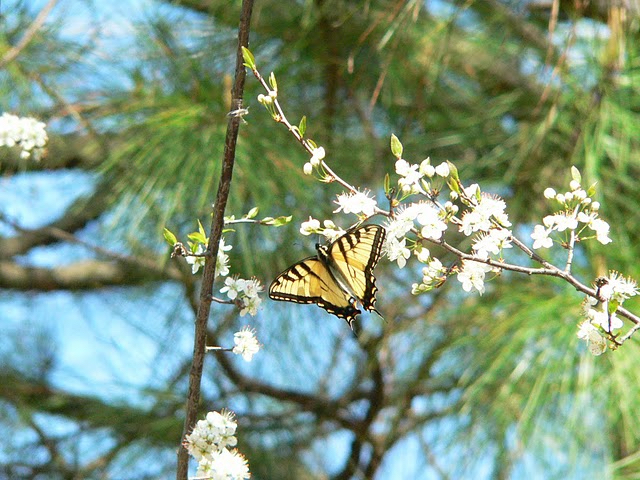
A tiger swallowtail butterfly at Honey Creek Woodlands. I would hope to be buried in a place like this that is full of wildlife. (Photo courtesy of Honey Creek Woodlands)
“We also have an unbelievable number of butterflies,” says Joe, “which is such a great thing for us because it’s symbolic of the resurrection.”
“I love the analogy that the caterpillar has no idea that it’s going to be a butterfly. It’s just going along being a caterpillar. And then all of a sudden, it’s a butterfly. I think that kind of has a parallel with us just living our lives the way we do not even knowing that when we’re done being this person that there’s something even more amazing yet to do.”
In fact, Honey Creek Woodlands holds the Georgia record for the number of butterflies found on a single day at one site. It helps that they have some of the best-trained butterfly counters in the Southeast.
“When we do the counts twice a year,” says Joe, “we routinely either set a new record for ourselves or try to break the record for the state of Georgia for the number of butterflies found.”
In the chapter in Sacred Acts about Honey Creek Woodlands, the reader learns, too, that Father Francis Michael, a leader in the monastery’s decision to proceed with Honey Creek Woodlands, has identified 52 species of dragonflies on the monastery’s grounds.
The staff at Honey Creek Woodlands and visitors see a lot of deer, turkey, squirrels and chipmunks. Signs of coyotes are also about.
“We know we even have bobcats, but I’ve yet to see one,” says Joe. “People really love that wildlife is here,”
Stepping Back
While the work for Honey Creek Woodland has been a satisfying and deeply rewarding experience for Joe, it’s also been a challenge.
“It’s been very challenging for me being that I don’t live in Georgia. I’ve been going back and forth for years, and I didn’t start this project thinking it was going to be a ten year project for me.”
When he first started, his wife needed to give ever more care for her aging mother, so Joe and his wife agreed that he should work for Honey Creek Woodland despite the separations it would require for them. She would be able to focus on her mother without feeling neglectful of Joe. Joe could pursue his life mission.
But then when his wife’s mother did pass away about four years ago, they had to make a big decision about what to do. They ultimately decided that Joe should continue at Honey Creek Woodlands. since she had four more years of teaching before she retired. Still, Joe makes clear these last four years have been the hardest on them.
His wife retired on June 6, 2018. Joe officially ended his time at Honey Creek Woodlands the day before on June 5. They are enjoying their next season of life together.
I’m happy to report that Joe continues to serve Honey Creek Woodlands as an advisor and consultant. But even after his consulting work ends with Honey Creek Woodlands, his life will eventually reconnect with the place in which he invested so much of his life. Joe has recently made the decision to be buried in Honey Creek Woodlands.
“I’ll be the first member of my family not buried in South Carolina,” says Joe, “so it was a big decision. My family’s kind of scattered in a bunch of different cemeteries, so there wasn’t one that was a family cemetery. I no longer live in Charleston, which is my hometown.”
“It just seemed like more people would know me, and I would be surrounded by more friends at Honey Creek Woodlands in Georgia.”
One last note. The numbers of green cemeteries are growing, and there is likely to be one or more in your state. I would encourage you to be discerning in choosing a green cemetery for yourself or a loved one. I totally believe in the green burial ideal, but I have seen green burial offered in woods that are clearly not being managed well for conservation. This is far better for Creation than the conventional burial, but it is not ideal.
The ideal situation is a cemetery that offers green burial as the burial method AND is managing the land of the cemetery and around it for conservation with long-term commitment and capabilities. It’s even more ideal if the land has some sort of permanent legal protection. Here’s a short piece that explains the distinctions between generic green burial and conservation burial. If you’re looking at a green burial option and have questions, I’d be happy to try to help you decipher whether it’s a good option.
Last thought – it’s been such a delight to talk with Joe. I’d ask that you ask God to bless Joe and his wife. He answered a call and moved a better culture of living with God’s earth forward.

